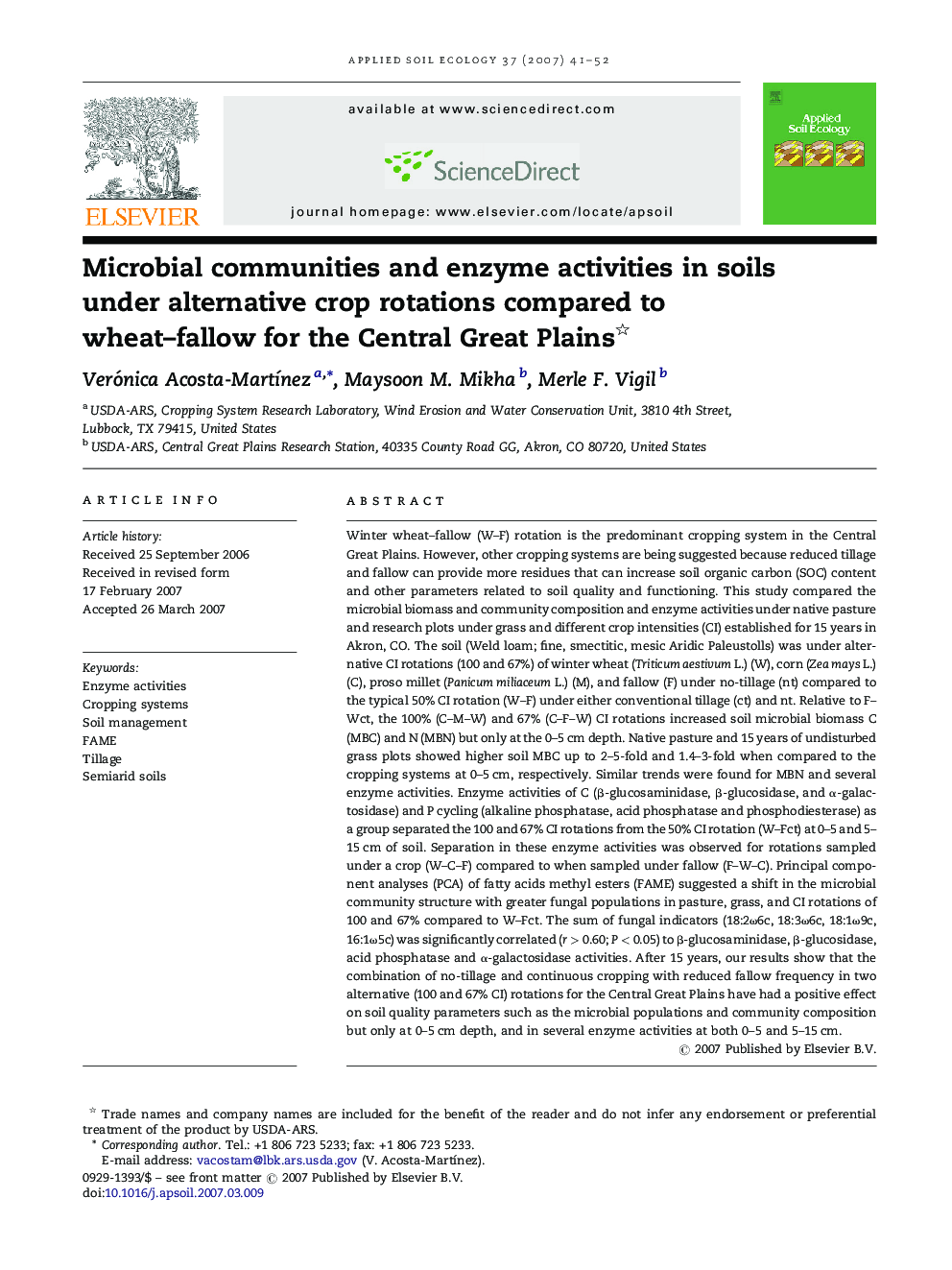| کد مقاله | کد نشریه | سال انتشار | مقاله انگلیسی | نسخه تمام متن |
|---|---|---|---|---|
| 4383384 | 1617837 | 2007 | 12 صفحه PDF | دانلود رایگان |

Winter wheat–fallow (W–F) rotation is the predominant cropping system in the Central Great Plains. However, other cropping systems are being suggested because reduced tillage and fallow can provide more residues that can increase soil organic carbon (SOC) content and other parameters related to soil quality and functioning. This study compared the microbial biomass and community composition and enzyme activities under native pasture and research plots under grass and different crop intensities (CI) established for 15 years in Akron, CO. The soil (Weld loam; fine, smectitic, mesic Aridic Paleustolls) was under alternative CI rotations (100 and 67%) of winter wheat (Triticum aestivum L.) (W), corn (Zea mays L.) (C), proso millet (Panicum miliaceum L.) (M), and fallow (F) under no-tillage (nt) compared to the typical 50% CI rotation (W–F) under either conventional tillage (ct) and nt. Relative to F–Wct, the 100% (C–M–W) and 67% (C–F–W) CI rotations increased soil microbial biomass C (MBC) and N (MBN) but only at the 0–5 cm depth. Native pasture and 15 years of undisturbed grass plots showed higher soil MBC up to 2–5-fold and 1.4–3-fold when compared to the cropping systems at 0–5 cm, respectively. Similar trends were found for MBN and several enzyme activities. Enzyme activities of C (β-glucosaminidase, β-glucosidase, and α-galactosidase) and P cycling (alkaline phosphatase, acid phosphatase and phosphodiesterase) as a group separated the 100 and 67% CI rotations from the 50% CI rotation (W–Fct) at 0–5 and 5–15 cm of soil. Separation in these enzyme activities was observed for rotations sampled under a crop (W–C–F) compared to when sampled under fallow (F–W–C). Principal component analyses (PCA) of fatty acids methyl esters (FAME) suggested a shift in the microbial community structure with greater fungal populations in pasture, grass, and CI rotations of 100 and 67% compared to W–Fct. The sum of fungal indicators (18:2ω6c, 18:3ω6c, 18:1ω9c, 16:1ω5c) was significantly correlated (r > 0.60; P < 0.05) to β-glucosaminidase, β-glucosidase, acid phosphatase and α-galactosidase activities. After 15 years, our results show that the combination of no-tillage and continuous cropping with reduced fallow frequency in two alternative (100 and 67% CI) rotations for the Central Great Plains have had a positive effect on soil quality parameters such as the microbial populations and community composition but only at 0–5 cm depth, and in several enzyme activities at both 0–5 and 5–15 cm.
Journal: Applied Soil Ecology - Volume 37, Issues 1–2, October 2007, Pages 41–52